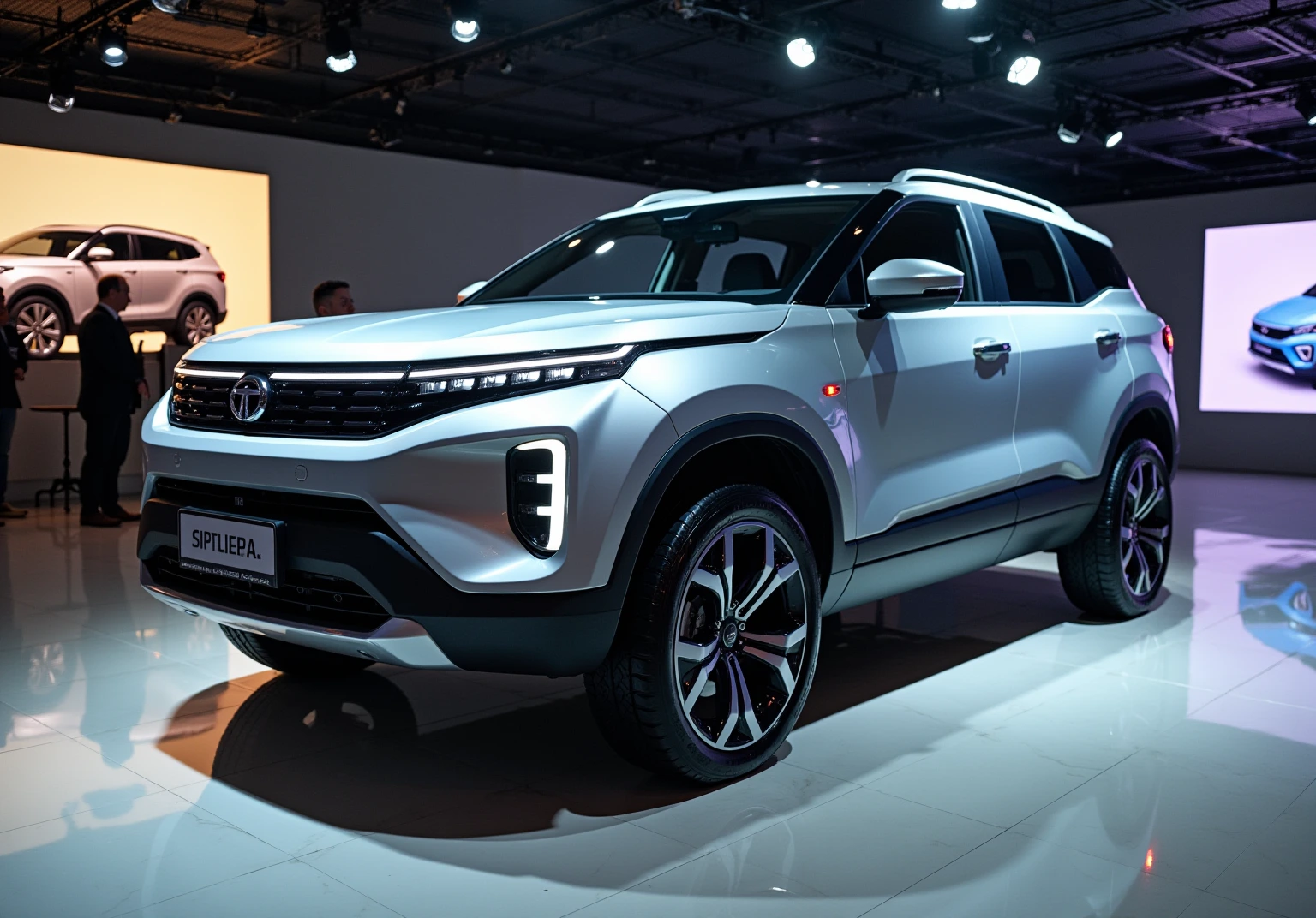For Indian automobile enthusiasts, the Tata Sierra name carries a nostalgic charm. Originally launched in the 1990s, the Tata Sierra was India’s first indigenously designed SUV. It was ahead of its time, featuring a three-door layout, large fixed rear windows, and a commanding road presence. However, the original Sierra was discontinued due to changing market demands and competition.
Now, Tata Motors is set to revive this legendary nameplate with a modern twist. The all-new Tata Sierra, showcased as a concept at Auto Expo 2020 and 2023, promises to blend retro appeal with futuristic design, advanced technology, and electric powertrain options.
Design: A Modern Take on a Classic

The new Tata Sierra retains the DNA of the original SUV while embracing contemporary styling cues. Its design is inspired by Tata’s Impact 2.0 philosophy, characterized by bold lines, a muscular stance, and an aerodynamic profile. The Sierra concept features an elegant yet rugged front fascia with a closed grille, sleek LED headlamps, and a connected light bar, giving it a futuristic appeal.
One of the most striking elements is the glasshouse design, reminiscent of the iconic fixed glass panels in the original Sierra. The elongated window layout offers a panoramic cabin experience, enhancing the feeling of space and openness.
Unlike the previous three-door layout, the new Sierra will likely come with conventional five-door practicality, making it more suited for modern buyers. Additionally, the SUV is expected to ride on large, stylish alloy wheels, adding to its road presence.
Features: Tech-Loaded and Futuristic
Tata Motors aims to position the new Sierra as a premium SUV loaded with the latest technology. The cabin is expected to feature a dual-screen infotainment system with wireless Apple CarPlay and Android Auto, a fully digital instrument cluster, and a high-quality sound system.
Tata’s latest voice-assisted AI technology, along with connected car features such as remote engine start, geo-fencing, and vehicle diagnostics, will further enhance the user experience.
The interior is designed with a minimalistic and driver-focused approach, featuring premium materials, ambient lighting, and a spacious layout. The seats are expected to be well-cushioned with ventilation and power adjustability.
Given Tata’s focus on safety, the new Sierra will likely come with multiple airbags, ABS with EBD, electronic stability control (ESC), and ADAS (Advanced Driver Assistance Systems) features, including lane departure warning and adaptive cruise control.
Engine Specifications and Performance
While Tata Motors has not officially confirmed the powertrain details, the new Sierra is expected to be available in both electric and internal combustion engine (ICE) variants. The EV version will likely be based on Tata’s Ziptron technology, featuring a high-capacity battery pack and a range of over 400 km on a single charge. Fast charging capabilities will enable users to recharge up to 80% within an hour, making it practical for long drives.
For those preferring a petrol or diesel option, Tata may offer a turbocharged engine with a choice of manual and automatic transmissions. A powerful, torquey engine will ensure a balanced combination of performance and fuel efficiency, making the Sierra suitable for both urban and off-road adventures.
Mileage and Range Expectations
Mileage is a crucial factor for Indian consumers. If Tata offers the Sierra with a diesel engine, it could deliver around 18-20 km/l, while the petrol variant might provide around 14-16 km/l. The electric version, on the other hand, is expected to offer an impressive range of 400-450 km per charge, making it an efficient and eco-friendly choice for urban commuters and long-distance travelers alike.
Expected Pricing
Tata Motors has not officially revealed the pricing of the new Sierra. However, given its premium positioning and advanced features, the ICE variants could be priced between ₹15 lakh and ₹22 lakh (ex-showroom). The electric version might fall within the ₹25 lakh to ₹30 lakh range, considering the advancements in battery technology and government incentives for EV adoption.
Pros and Cons of Tata Sierra
Like any vehicle, the Tata Sierra will have its strengths and limitations. On the positive side, the SUV offers a nostalgic yet modern design, premium features, and the flexibility of both ICE and EV powertrains. Tata’s strong emphasis on safety and connectivity features makes it a compelling choice in its segment.
However, potential downsides could include a higher price tag for the electric variant, limited availability in initial phases, and the absence of a diesel option if Tata decides to go all-electric.
Comparison with Competitors
The Tata Sierra will compete with SUVs like the Mahindra XUV700, Hyundai Creta, MG Hector, and upcoming electric SUVs like the Mahindra XUV400 EV. While the XUV700 offers ADAS and powerful engine options, the Hyundai Creta and MG Hector focus on feature-rich cabins and refined drivetrains. The Tata Sierra’s advantage will lie in its unique design, EV capabilities, and Tata’s robust safety standards. If priced competitively, it could carve a significant market share in the premium SUV segment.
Final Thoughts: Is the Tata Sierra Worth Waiting For?
The rebirth of the Tata Sierra is an exciting development for SUV lovers in India. With a blend of nostalgic charm and futuristic innovation, the Sierra is poised to be a game-changer in Tata’s lineup. Whether you’re an EV enthusiast looking for a sustainable SUV or a buyer seeking a stylish and feature-packed vehicle, the Sierra is shaping up to be a compelling option.
As Tata Motors finalizes the production version, all eyes are on the launch date and pricing strategy. If executed well, the new Sierra could redefine the SUV segment and bring back the legacy of an Indian automotive icon.
